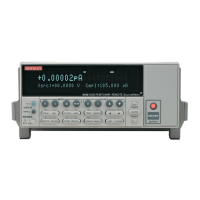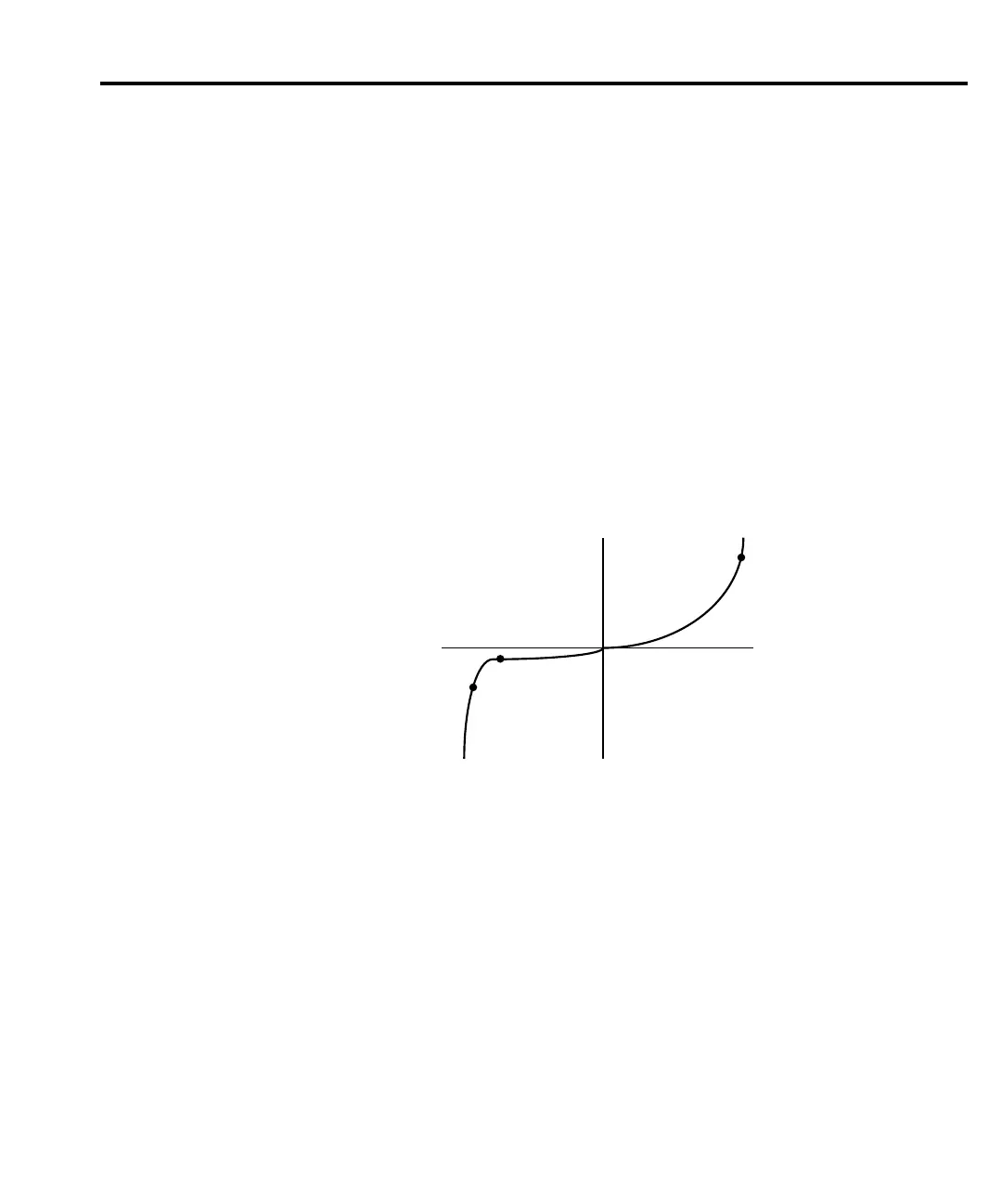Sweep Operation 9-9
If, for example, your test requires that the diode be forward biased, you can configure the
compliance limit test (LIMIT 1) to fail if out of compliance. This fail condition would indicate
that the diode is forward biased, and the memory sweep will proceed to the next source mem-
ory location to perform the source-measure operation. If, however, the diode is installed back-
wards, the compliance limit test will PASS (in compliance). The pass condition will cause the
sweep to branch to a memory location where the polarity of the source is reversed, again for-
ward biasing the diode for the source-measure operation.
This branching technique simplifies installation of the diode in the component handler
because polarity is no longer a concern. If the diode is installed backwards, the sweep will
branch to a memory location that reverses source polarity.
Diode test example
Limit testing and a source memory sweep can be used to test a diode. Three tests that are
typically performed on a diode include the Forward Voltage Test (V
F
), Reverse Breakdown
Voltage Test (V
R)
and Leakage Current Test (I
R
). Figure 9-6 illustrates the test points on a typi-
cal diode curve.
Forward Voltage Test (V
F
) — This test involves sourcing a specified forward bias current
within the normal operating range of the diode, then measuring the resulting voltage drop. To
pass the test, the voltage must be within the specified minimum and maximum values.
Reverse Breakdown Test (V
R
) — A specified reverse current bias is sourced and the result-
ing voltage drop across the diode is measured. The voltage reading is compared to a specified
minimum limit to determine the pass/fail status of the test.
Leakage Current Test (I
R
) — The leakage test verifies the low level of current that leaks
across the diode under reverse voltage conditions. A specified reverse voltage is sourced, then
the resultant leakage current is measured. Good diodes have leakage current that is less than or
equal to the specified maximum value.
This test example also uses sweep branching to simplify handling of each diode. No matter
how the polarity sensitive diode is installed in the test fixture, it will be biased properly. See
Sweep branching for details.
I
V
-I
-V
V Test
F
I Test
R
V Test
R
igure 9-6
Typical diode I-V curve and
test points (not to scale)

